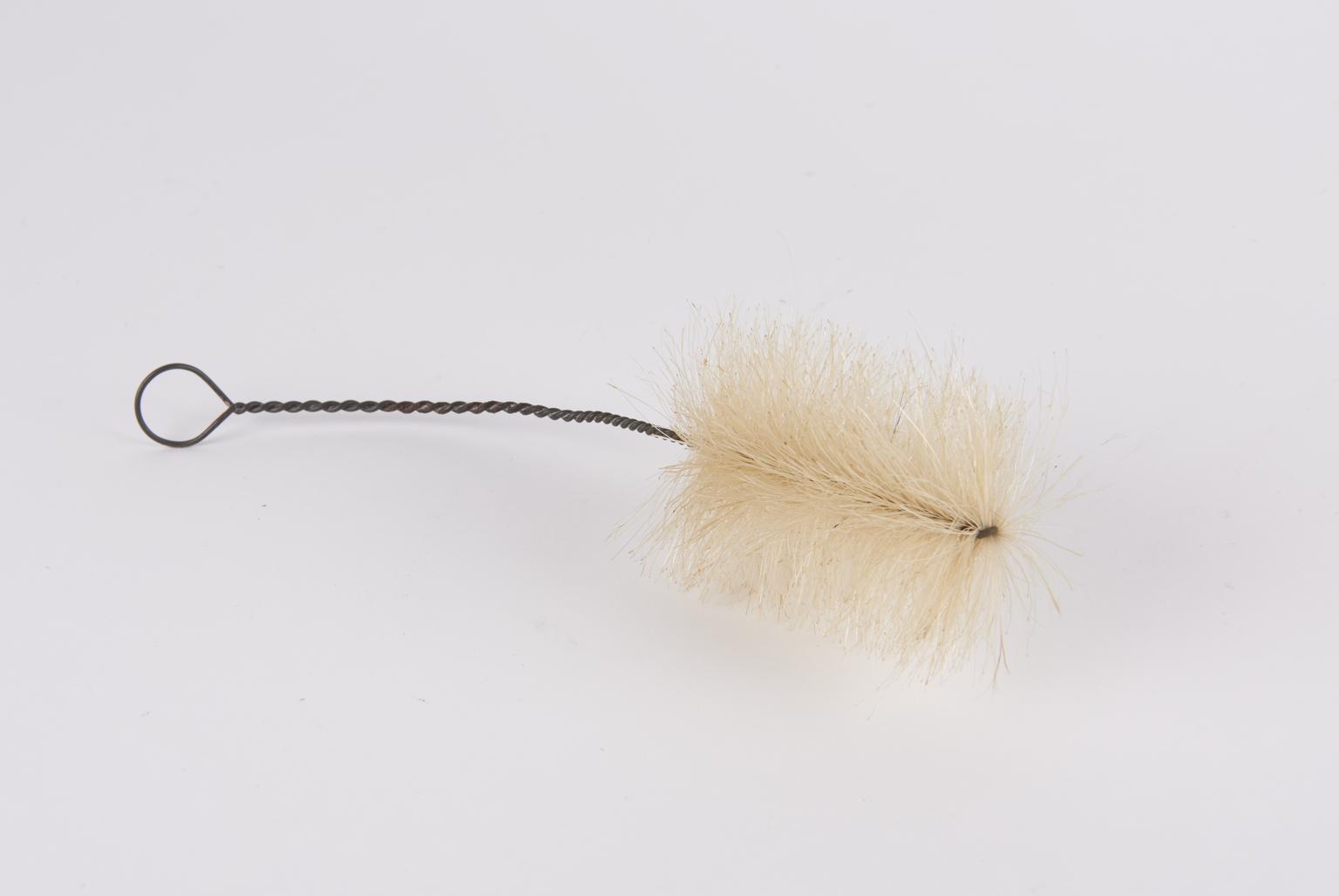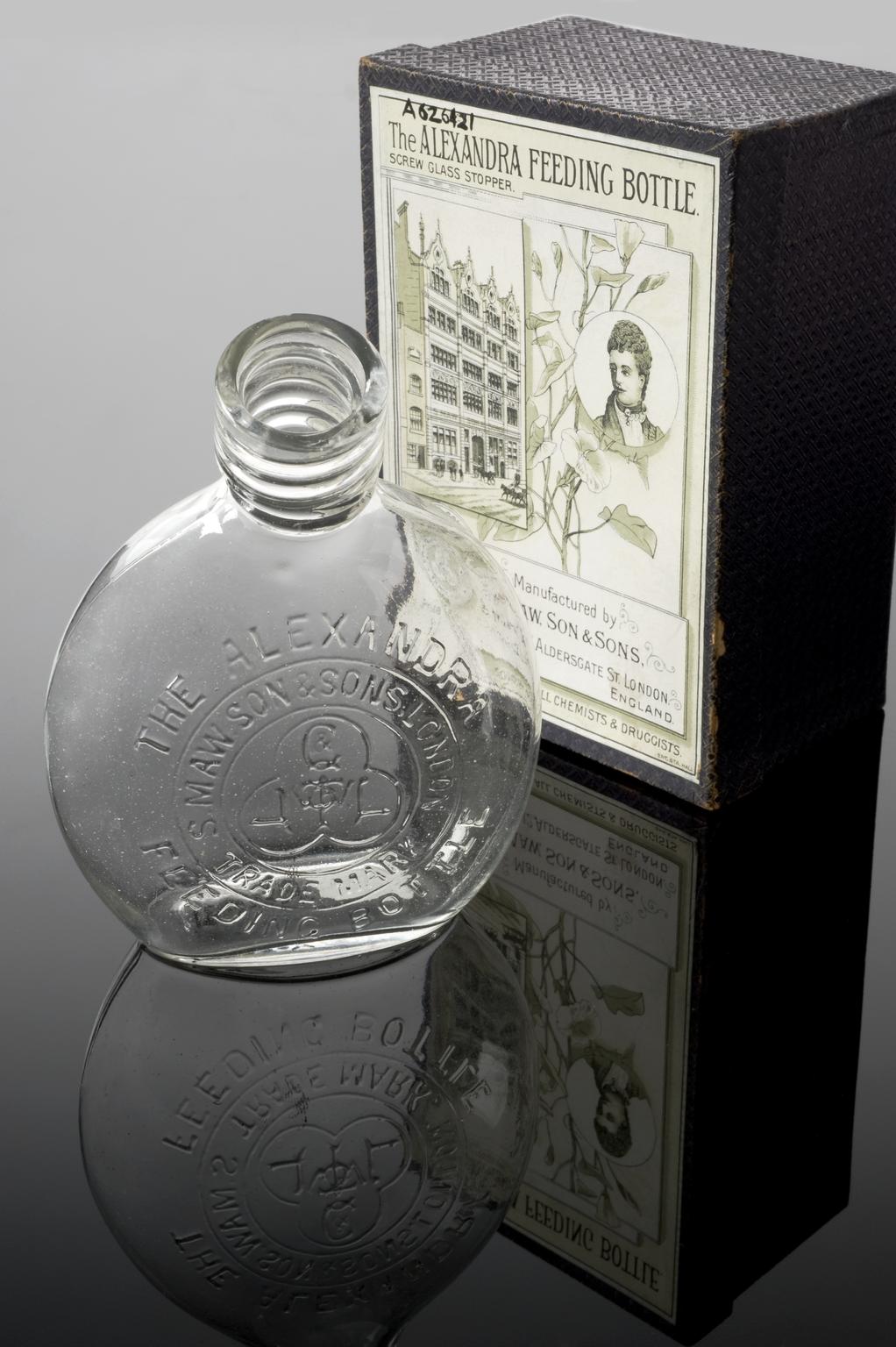Advertisement for glass infant's feeding bottle
Advertisement for Maw's toiletries for glass infant's feeding bottle in original carton, made by S. Maw, Son and Sons, London, 1901-1920

Glass infant's feeding bottle in original carton, made by S. Maw, Son and Sons, London, 1901-1920
A stopper with a straw was placed in the top of this glass ‘Alexandra’ feeding bottle for an infant to drink out of. The bottle was made by S Maw Son and Sons and came with cleaning brushes. It was bought at chemists and druggists.
’Alexandra’ may refer to Queen Alexandra (1844–1925), wife of Edward VII (1841-1910). She was popular with the British public and did lots of charity work. Bottle feeding was linked to diarrhoea in young babies and infants in the second half of the 1900s. This could be fatal when vital lost fluids and salts were not replaced.
Advertisement for Maw's toiletries for glass infant's feeding bottle in original carton, made by S. Maw, Son and Sons, London, 1901-1920

Bottle cleaning brush for glass infant's feeding bottle in original carton, made by S. Maw, Son and Sons, London, 1901-1920
Teat in glass stopper for glass infant's feeding bottle in original carton, made by S. Maw, Son and Sons, London, 1901-1920
Rubber tube in glass stopper for glass infant's feeding bottle in original carton, made by S. Maw, Son and Sons, London, 1901-1920

Cardboard box for glass infant's feeding bottle in original carton, made by S. Maw, Son and Sons, London, 1901-1920

Glass infant's feeding bottle, made by S. Maw, Son and Sons, London, 1901-1920
A stopper with a straw was placed in the top of this glass ‘Alexandra’ feeding bottle for an infant to drink out of. The bottle was made by S Maw Son and Sons and came with cleaning brushes. It was bought at chemists and druggists.
’Alexandra’ may refer to Queen Alexandra (1844–1925), wife of Edward VII (1841-1910). She was popular with the British public and did lots of charity work. Bottle feeding was linked to diarrhoea in young babies and infants in the second half of the 1900s. This could be fatal when vital lost fluids and salts were not replaced.